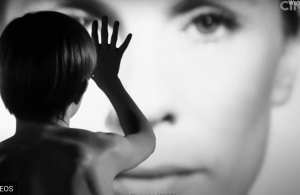Lighting For Meaning
Foley Sound
Kuleshov Effect
Advanced Cinematography
The Dark Knight
Key Terminology
- Ideology – a system of ideas and ideals, especially one which forms the basis of economic or political theory and policy.
- Socio-Political Context – This sociopolitical context refers to contemporary ideologies, regulations, policies, conditions, laws, practices, traditions, and events that define America’s education. These ideologies, practices, laws, and policies cause the current structural inequality in the education sector.
- Vigilante -a member of a volunteer committee organised to suppress and punish crime summarily (as when the processes of law are viewed as inadequate) broadly : a self-appointed doer of justice.
- Dominant Hegemony – Hegemony’ describes the dominance of one social group or class in a society. … Such ‘hegemonic dominance’ rests on cultural influence, non-military resources, and economic power.
- Authoritarianism – the enforcement or advocacy of strict obedience to authority at the expense of personal freedom. Lack of concern for the wishes or opinions of others.
- Dichotomy – a division or contrast between two things that are or are represented as being opposed or entirely different.
Key Quotes in the article
- Vigilantism, justice and vengeance – ‘Batman as a symbol of vigilantism,
justice, vengeance and even fascism. He
is a force for ‘good’ who fights criminals
by putting on a mask, attacking them in
the dark and dishing out his own vigilante
justice, uninhibited by the laws, restrictions
and corruption that the local police deal
with. Bruce Wayne is a character who begins
by wanting to take vengeance on the
murderer of his parents by attempting to
assassinate the criminal.’ - By any means necessary – ‘the tactics of Batman – In The
Dark Knight, his interrogation of the Joker
becomes brutal, like the torture so eagerly
justified by stopping acts of terrorism in real
life. Batman then uses a scarily sophisticated
and completely illegal surveillance’ - Inequality in Gotham – ‘The
people of Gotham are poor, struggling and
desperate. The first real contact with them
that Wayne has is when a criminal robs,
then kills his parents for their expensive
belongings. Dothan (2012) argues that:
the Batman movies pretty consistently
portray Gotham as corrupt, chaotic, unequal
and unjust.’ - The masses – ‘However Nolan’s films have
less faith in the masses. Aside from The
Dark Knight’s climax, Gotham’s people are
seen as docile, useless and incapable of
achieving anything worthwhile. The Dark
Knight is interesting in that
the film’s ideological conflict seems to centre
around the fundamental worth of humanity,
whether it is truly as corruptible as the Joker
thinks it is or if it has an essential nobility as
Bruce Wayne believes.’
‘Bruce Wayne became the terrorist and Batman became both torturer and operator of a mass surveillance system; it was exactly the point that in fighting the villain, he became the villain.’ similar to Americas approach on the War On Terror.
. 2013. Dark Knight, Dark Ideas. The Media Magazine. 44(2), pp. 3 7-41.
War On Terror In The Dark Knight
Here are my notes on War on Terror.
Batman Genre Analysis
Similarities:-
- Typical superhero costumes with logos
- Setting is in a large well known city like New York or one that depicts it very similarly
- Epic conflict with lots of fighting
- The superhero’s all have an Achilles heel
Differences:-
- The Joker who is the villain wears bright colours unlike normal dark colours. the colour palette contract many other superhero films
- The villains motivations are different to other villains, the Joker just want to watch the world burn.
- The love interest dies and rejects the superhero.
- Batmans does not act morally right and he echoes the CIA
Mise-en-scene in The Captains Feast
The Captain’s Feast establishes the nature of the fascist ruling class in rural Spain and the attitudes and values of Captain Vidal, the villain in the film. The feast is a scene of indulgence, greed and power. Vidal is a fascist brute, he is proud of his reputation and dominates the scene. The guests are hypocrites and prove to be arrogant, patronising and snobbish. Carmen, seems out of place and is represented as fragile, elegant and intimidated by the other guests, we also get the impression that Vidal does not care for her.
Vidal presented as a very neat, tidy and well groomed man, this shows he takes pride in himself. Another example of Mise-en-scene is his costume, which is an army uniform with many medals, which implies he is very high ranking and important. During the ‘Feast’ scene he tells everyone when to sit down, this connotates the idea that he is the most important person in the room. It also suggests that everyone obeys him possibly due to fear. Vidal is sat at the head of the table, which implies he holds the most power. The lighting in the scene highlights from the shoulders up and especially on his face, this signifies he is the centre of attention and everyone needs to be acknowledging him and worshiping him.
My Genre Analysis Of Pan’s Labyrinth
Similarities to the Fantasy Genre:
- Pans Labyrinth has many of the convectional fantasy characters, like beasts and fairies.
- Another similarity is the setting, as in includes forests and mysterious trees.
- The hero has tasks to complete that show their worth.
Differences to the Fantasy Genre:
- A very noticeable difference is the ending as normally in a fantasy film the ending is happy and the hero kills or defeats the villain, however this is not the case in Pan’s Labyrinth and Ophelia dies.
- Although there are still magical items like the dagger and the tree, they are quite often given a sinister edge.
- The home of the hero is normally very peaceful, however Ophelia home is not and she is very unhappy.


